Investigation the magnetic fields of brushless motor with concentrated coils on the stator
11. Február, 2013, Autor článku: Chudiváni Ján, Elektrotechnika
Ročník 6, číslo 2  Pridať príspevok
Pridať príspevok
![]() This paper deals with of brushless motor with concentrated coils on the stator and SmCo permanent magnets on the rotor. This paper describes the definition and the separation of brushlesss motor. This paper deals with the fixation surface mounted permanent magnet on the rotor. Using the Finite Element Method Magnetics (FEMM) shows the magnetic fields brushless motor with concentrated coils on the stator in no-load condition, in loaded condition and in the condition armature reaction.
This paper deals with of brushless motor with concentrated coils on the stator and SmCo permanent magnets on the rotor. This paper describes the definition and the separation of brushlesss motor. This paper deals with the fixation surface mounted permanent magnet on the rotor. Using the Finite Element Method Magnetics (FEMM) shows the magnetic fields brushless motor with concentrated coils on the stator in no-load condition, in loaded condition and in the condition armature reaction.
Introduction
Brushless motors using on the excitation permanent magnets and thereby is removed the commutation problem. The commutation causes wear brushes dc motors. The commutation we can to remove the exclusion brushes thus greatly changes the construction and the operation of dc motors. For this reason it was necessary to invent a new type of electric machines in which is the commutation designed otherwise.
1. Definition and separation brushless motors
Replacement function commutator and brushes with electronic switching circuit [1] has led to the construction of a new type motor with electronic commutation. In these motors excitation is replaced by a permanent magnets. Therefore are called brushless motors. The term „brushless“ can name several types of machines. Not at all machines the term „brushless“ gives us characteristic properties which should be different from classical forms of electrical machines. Therefore we can of brushless motors the separation on:
- d. c. brushless motor,
- synchronous brushless motor,
- stepping (switched reluctance) motor,
- reluctance synchronous motor [2].
2. Fixation of surface mounted permanent magnets on the rotor
Surface mounted permanent magnets motors require glass fiber bandage or carbon fiber bandage (see Fig. 1) for fixation of surface mounted permanent magnets on the rotor. To achieve a defined prestress and therefore a defined contact force, bandages are designed as prefabricated sleeves made either from glass or carbon fiber, which is embedded within an epoxy resin matrix.

Fig. 1 Cross section permanent magnets motor with carbon fiber bandage
The assembly of the rotor is done by either axial pressing or cold shrinking of the sleeve onto the rotor. The contact force due to the glue is neglected in the following, as due to the large number of magnets it may vary from magnet to magnet, thus being uncertain. The mechanical stress of the bandage is mainly in the form of tangential tensile stress σt. If the rotor is designed with an interpole gap (pole coverage ratio αe < 1), additional bending load occurs at the magnet edges. In an overspeed test, the bandage has to withstand centrifugal forces at 20 % overspeed for 2 min. and must provide a positive residual contact pressure pc between the magnets and the rotor iron. It must be assured that the maximum permissible tangential stress inside the bandage is not exceeded. These two fundamental conditions for the mechanical stability of a high speed permanent magnets rotor at overspeed are described by
| (1) |
| (2) |
where n are speed, noverspeed is overspeed, pc,prestress is overspeed residual contact pressure, σt,prestress is overspeed of tangential tensile stress, pω,m is pressure on the magnet at angular frequency, pω,b is pressure on the bandage at angular frequency, σt,ω is of tangential tensile stress at angular frequency and σt,max is maximum of tangential tensile stress. The problem fixation of surface mounted permanent magnets on the rotor is interesting for electric machines in high speed applications. The tangential tensile stress σt and thermal expansion are the main influences that acting on the bandage permanent magnets. Carbon fiber bandage against glass fiber bandage is preferable since has a much higher the mechanical strength which allows to achieve higher maximum speed electrical machine [3].
3. The magnetic fields brushless motor with concentrated coils on the stator
Magnetic fields are solved using the program Finite Element Method Magnetics (FEMM) in SmCo permanent magnets brushless motor with concentrated coils on the stator. FEMM is a set programs on solve static and low frequency magnetic fields. These programs usually solve problems in two dimensional and axial symmetrical environment [4]. Basic parameters investigated brushless motor which are the basis for solving the magnetic fields are as follows:
- P = 50 W – power,
- m = 3 – number of phases,
- 2p = 6 – number of poles,
- Ωn = 0,75 – nominal efficiency,
- cosφn = 0,75 – rated power factor,
- n = 4000 rpm – rated speed,
- M = 0,15 Nm – nominal moment,
- Br = 1,2 T – remanence SmCo,
- Hc = 724000 A/m – coercivity SmCo,
- j = 0,3 A/mm2 – current density.
3.1 Brushless motor with concentrated coils on the stator in no-load condition
In the program FEMM is a no-load condition characterized by a zero current that passes through stator slots which means that of the cooper windings in the stator slots is replaced by air. On the poles armature are located permanent magnets SmCo which are oriented in angle 90°. The magnetic field map and the normal component of magnetic flux density in no-load condition are shown in Fig. 2 and Fig. 3.
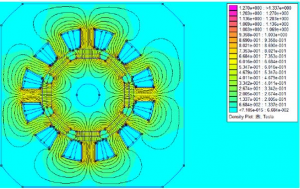
Fig. 2 The magnetic field map in no-load condition
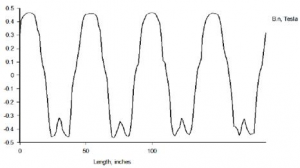
Fig. 3 The normal component of magnetic flux density in no-load condition
3.2 Brushless motor with concentrated coils on the stator in loaded condition
The investigated brushless motor has twelve stator teeth on which is twelve coils with concentrated windings. Four slots stator are loaded current with a current density 0 A/mm2, four slots stator are loaded current with a current density + 0,3 A/mm2 and four slots stator are loaded current with a current density – 0,3 A/mm2. SmCo permanent magnets are oriented at angle 90°. The magnetic field map and the normal component of magnetic flux density in loaded condition are shown in Fig 4 a Fig 5.
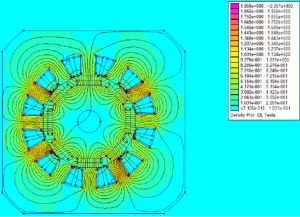
Fig. 4 The magnetic field map in loaded condition
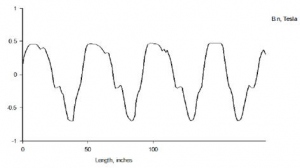
Fig. 5 The normal component of magnetic flux density in loaded condition
3.3 The condition armature reaction brushless motor with concentrated coils on the stator
The only difference in the condition armature reaction compared with loaded condition in program FEMM is that permanent magnets are replaced by air. The magnetic field map and the normal component of magnetic flux density in the condition armature reaction are shown in Fig. 6 and Fig. 7.
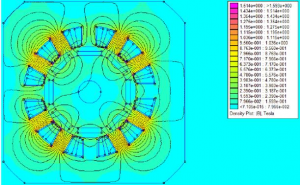
Fig. 6 The magnetic field map in the condition armature reaction
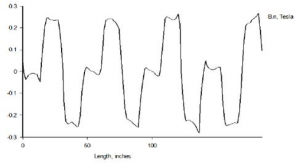
Fig. 7 The normal component of magnetic flux density in the condition armature reaction
Conclusion
This paper deals with of brushless motor with concentrated coils on the stator which have on the rotor SmCo permanent magnets. In the program FEMM are solution the magnetic fields of brushless motor with concentrated coils on the stator in no-load condition, in loaded condition and in the condition armature reaction. This paper emphasizes on the solution the magnetic field SmCo permanent magnets of brushless motor with concentrated coils on the stator. These results are dependent on the size of the current that passes through concentrated coils on the stator and type used of permanent magnets. Knowledge the magnetic fields is important on to recognize the behaviour of the investigated SmCo permanent magnets of brushless motor with concentrated coils on the stator during operation.
References
- KENJO, T.: Electric Motors and their Control. Oxford University Press, 1991.
- HRABOVCOVÁ, V. et al.: Moderné elektrické stroje. 1st ed. vyd. Žilina: EDIS – vydavateľstvo ŽU, 2001. ISBN 80-7100-809-5, p. 217-223.
- Binder, A., Schneider, T. and Klohr M.: Fixation of Buried and Surface-Mounted Magnets in High-Speed Permanent-Magnet Synchronous Machines. IEEE Transactions on Industry Applications. 2006. Vol. 42. No. 4. p. 1031-1037.
- MEEKER, D.: Finite Element Method Magnetics. User´s manual. Version 3.1, 2002, 4 p.
Slovak University of Technology, Faculty of Electrical Engineering and Information Technology, Institute of Power and Applied Electrical Engineering, Ilkovičova 3, 812 19 Bratislava, Slovak Republic

